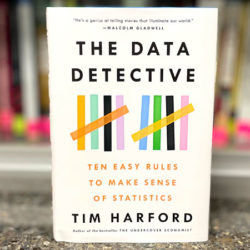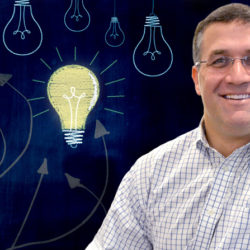
Todd Simkin recently spoke with Ted Seides of the Capital Allocators podcast. It was a wide-ranging conversation that touched on his career history, Susquehanna’s approach towards educating traders, and the risks involved when entering a new business. Check out the full interview here, and keep reading for a few of our favorite moments from the podcast.
Trading and Grammar
- Trading is like grammar. There are things you know how to do grammatically that you could not describe.
- If you’re a native English speaker, you’ve been using the language long enough to know when something sounds right and when something sounds wrong.
- Since each trade is unique, there’s no one guideline for how to approach valuing a trade. It isn’t a simple order of operations like order size should come before price.
- A senior trader will sometimes be able to identify a bad trade that a junior trader might not, simply because they know the grammar. They know what goes into making appropriate decisions for risk allocation under conditions of uncertainty.
Trading is a Mix of Art and Science
- Our society increasingly blends art and science, and Todd thinks that’s true in trading as well.
- The art side involves figuring out how to appropriately respond to real people who will make their own decisions based on what we do.
- The science side lies in understanding the fundamental principles of trading and the statistical arbitrage relationships between different products or types of information.
Getting Paid Appropriately for Asymmetric Risk
- When Susquehanna discusses its insurance business internally, we often describe it as a “short put business,” meaning that the most we can ever win is the price at which we sell the risk. We can, however, lose a lot, so we’ve got this asymmetric risk exposure where we can lose a lot but only ever win a little.
- The venture capital business, on the other hand, is one where you can only ever lose what you invest, what you “buy in” for. Sometimes you invest in a company like ByteDance (TikTok’s parent company) when it’s not worth much, and it turns into one of the largest social media platforms in the world.
- That does not mean that venture capital is a winning business or that insurance is a losing business because of these differing asymmetries. Ultimately, any risk transfer business — trading, private equity, insurance, etc. — is a good business if we are able to transact at prices that reflect the underlying risk.
How Patient Capital Provides Susquehanna an Edge
- A problem some competitors, like hedge funds, have is that they must publish not just quarterly, but monthly, weekly, or even daily reports. They’ve got to show that they’re staying with the strategy that they outlined for their investors and continue to show regular returns.
- Susquehanna’s “investors” are the principals of the firm. When we take outsized risks, the principals understand those risks and the decision-making process behind them.
- Because Susquehanna can be “patient,” it has been able to stay in and grow businesses even when they experience downturns.
Luck’s Impact on Investing
- One of Todd’s favorite quotes is from Thomas Jefferson: “I’m a big believer in luck and I find that the harder I work, the more of it I have.”
- Todd thinks that part of the firm’s “luckiness” comes from that philosophy. That said, there have certainly been times where we’ve been objectively lucky.
Valuing Process Over Outcome in Risk Decisions
- Roger Federer recently gave a graduation speech at Dartmouth College, stating that although he has won only 54% of his points, he ended up winning over 80% of the ~1,500 tennis matches he played.
- Similar to a tennis player winning 54% of his points, Susquehanna aims to have edge on all of our trades. While we know that all of those trades won’t go our way, collecting those edges repeatedly across our hundreds of traders and dozens of different trading areas, should ultimately benefit the firm over the long run.
- Both Federer’s points and Susquehanna’s trades exemplify patient growth, where thin edges maintained over long periods result in sustained positive outcomes.
The Two Definitions of Confidence
- Confidence can refer to the strength behind your convictions. It can also mean a mathematical understanding of how wrong you could be, i.e., confidence intervals.
- They’re actually linked; the swagger behind your decisions and how tightly they are held comes from how sure you are in your assessment of the range of possible outcomes.
Fun Risks Underwritten by Susquehanna Re
- The most fun risks we underwrite are related to sports outcomes
- In particular, a reinsurance policy that backs a business’s sales promotion tied to a win by the local team is quite fun and exciting.
Takeaways
Susquehanna’s success stems from some key practices.
Teaching newer traders to understand the “grammar” of trading, having patience when making decisions, focusing on the thought processes rather than results, calculating the right price for taking on risk, and realizing that slight edges over time accumulate into long-term success over time. (some luck also helps).
If you liked the podcast and are looking for similar content, check out Todd’s appearances with the Quantitative Traitor and AlphaMind Podcasts earlier this year here or his recent Wall Street Journal feature here.




Subscribe Now
Get each new post sent straight to your inbox